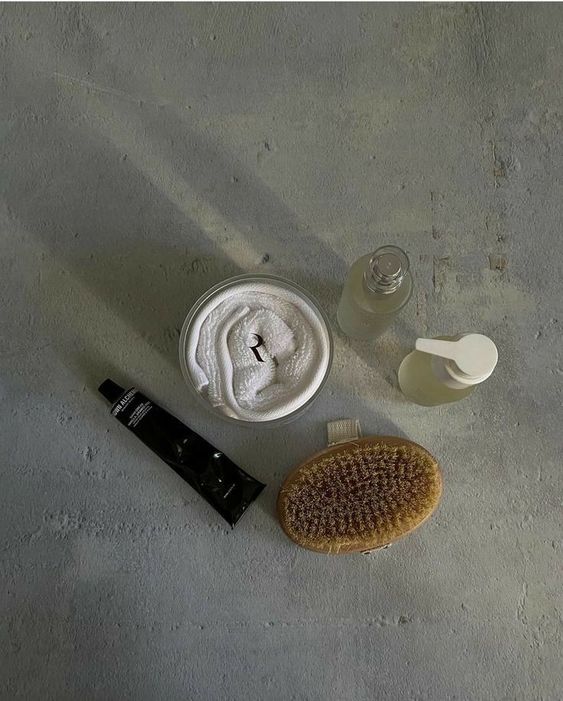
Ever wondered how the hormones in your body can affect your skin’s health? We’re sure you have researched this topic time and time again, so we’ve compiled all the major points you should know about to make your lives just a little easier.
Hormones are chemical messengers synthesized and released by specialized cells of the endocrine glands[1]. They travel through the bloodstream and target the receptors of several tissues and organs in order to regulate a wide array of bodily functions including appetite, growth, metabolism, mood, reproduction, sleep-wake cycle, etc.[1].
Hormones can either communicate messages between 2 endocrine glands, the pituitary gland releases the luteinizing hormone, which supports ovulation in the ovaries as well as progesterone production, or between one endocrine gland and a target organ, the islet cells of the pancreas releases insulin which prompts muscles, liver and fat cells to properly use glucose for energy purposes[1]. When it comes to hormones, a little goes a long way[1]. This means that only a small amount is needed to exert changes in the cells or even the whole body. Even a slight shift in how our system works can throw our hormones off balance, our levels are too low or too high and cause different medical and skin conditions. In this post, we will set out on an endocrine journey to explore the negative impact thatormo
hormonal skin changes
can have on our complexion, as well as review several alternatives to harmonize them.How Your Hormones Affect Your Skin: What You Should Know
-
Estrogen
(ovaries):- Low levels (
estrogen deficient skin
): usually related to menopause changes, cause thinning skin, loss of elasticity, decreased collagen synthesis, lipid/transepidermal water loss (dryness), wrinkling, and impaired wound healing[2]. Estrogen acts as a potent antioxidant and anti-inflammatory agent[2]. So, when its concentrations are reduced, the skin will be less protected against non-melanoma skin cancer as well as the damaging effects of oxidative stress[2]. - High levels: whether they are produced by oral contraceptives, estrogen ointments, or pregnancy, are
associated with hyperpigmentations that mainly affect the face, abdomen (including the linea alba), areola,
and genitals[2]. On the other side, oral estrogen can inhibit sebum secretion in acne-prone patients and
prevent acne lesions by diminishing the % of circulating free testosterone[3]. Extremely elevated levels of
estrogens could trigger the opposite effect, though
(
pimples before period
).
- Low levels (
-
Progesterone
(ovaries, testes, and adrenal glands):- Low levels: although the current studies are not conclusive regarding the impact of lack of progesterone in the skin, we do know for a fact that its topical application (at 2%) in peri and postmenopausal women can diminish wrinkle depth and increase both elasticity and firmness[4].
- High levels: as seen during menstruation and pregnancy, are linked to acne
(
period pimples
) and flare-ups[3]. An increase in sebum cholesterol and progesterone levels usually go hand-in-hand because the first is a precursor of the latter[3].
-
Androgens
(ovaries, testicles, and adrenal glands)*:- High levels: cause abundant sebum production, which in turn blocks hair follicles and prompts an inflammatory response that results in acne vulgaris (face, back, and chest)[3]. Elevated androgen levels, predominantly free dihydrotestosterone (DHT), have also been shown to slow down wound healing[5]. This phenomenon is frequent in teenagers and polycystic ovarian syndrome patients. In addition, women with this disorder develop hirsutism which is excessive hair growth that follows a male-like pattern.
-
Cortisol
*:- High levels: concentrations rise when under chronic stress through the HPA axis (hypothalamic-pituitary-adrenal)[6]. As soon as the stimulus reaches the adrenal glands, they are prompted into releasing cortisol which, in turn, promotes the secretion of pro-inflammatory factors[6]. Constant activation of the HPA axis generates a chain of chaotic reactions, including reduced lipid production (ceramides, fatty acids), transepidermal water loss, DNA damage, shorter telomeres (end of chromosomes; linked to biological aging), as well as disruption of collagen/elastin/hyaluronic acid levels[6]. All of the above can aggravate conditions such as acne, atopic dermatitis, and psoriasis and promote premature aging.
-
Insulin and insulin-like growth factor
*:- High levels: cause increased sebum production and proliferation of keratinocytes, which results in acne, hidradenitis suppurativa (acne inversa), skin tags, psoriasis, and acanthosis nigricans (darkened and thickened patches in skin creases like armpit, groin, neck)[7][8]. Furthermore, when these hormones circulate at elevated concentrations the cells of the skin age at a faster pace and collagen fibers harden (due to cross-linking)[7][8].
*Low concentrations of androgen, cortisol, insulin, and insulin-like factor have not been linked to skin conditions.
-
Thyroid
:- Low levels (hypothyroidism): when the body does not secrete enough thyroid hormones it is normal for the skin to become dull, coarse, thick, scaly, yellowish (carotenemia), with puffy eyes (mixedema) and extreme dryness (xerosis). The latter can lead to eczema, wrinkles, and poor wound healing[9].
- High levels (hyperthyroidism/thyrotoxicosis): patients experience thin skin, flushing, erythema (redness), thread veins (telangiectasias), hyperpigmentations, and sweaty hands/palms [9].
General Recommendations To Keep In Mind
There are some general recommendations that you can easily implement in your daily life to maintain your hormonal balance or support any medical treatment:
- Eat a balanced diet consisting of fruits, vegetables, legumes, whole grains, nuts & seeds, healthy fats, eggs, fish, and lean meats. Try to eat organic and grass-fed as much as possible.
- Minimize consumption of gluten, dairy, refined salt/sugar, hydrogenated fats, and any processed foods.
- Incorporate phytoestrogen-rich foods into your diet such as grapes, flax seeds, lentils, and soy (provided you are not intolerant/allergic).
- Exercise at least 3-4 times per day.
- Drink water when thirsty.
- Practice meditation, breathing exercises, or any other technique that helps you deal with daily stress.
- Try to secure 7-9 hours of restful sleep per day and go to bed no later than 10 p.m.
- Start addressing your skin symptoms as soon as they appear. If they last more than 3 weeks, that means they have become chronic. The longer you wait, the more difficult it will be to revert/improve the lesions.
- Seek professional help. Most hormonal imbalances will not resolve on their own and you might even need to turn
to oral or topical hormones (
testosterone skin patch
,progesterone skin
cream) to properly address your condition.
Too much or too little hormones can wreak havoc on our health. This chemical messenger chaos will, sooner or later, find its way into the skin and produce a wide variety of symptoms. If you have been dealing with a skin disorder for a considerable amount of time and nothing seems to help, then it is highly likely hormonal imbalances are to blame. We regret to say this but, yes,
hormones and skin issues
go hand in hand. Do not despair, though, as there is always a solution. With patience, discipline, and the support of an experienced practitioner you will be able to find the light at the end of the tunnel and restore a wholesome relationship betweenhormones and your skin
.References:
[1] https://my.clevelandclinic.org/health/articles/22464-hormones
[2] https://my.clevelandclinic.org/health/articles/22464-hormones
[3] https://www.sciencedirect.com/science/article/abs/pii/S0009912011013932
[4] https://pubmed.ncbi.nlm.nih.gov/16120154/
[5] https://www.ncbi.nlm.nih.gov/pmc/articles/PMC3763909/
[6] https://www.ncbi.nlm.nih.gov/pmc/articles/PMC4082169/
[7] https://www.ncbi.nlm.nih.gov/pmc/articles/PMC4397216/




